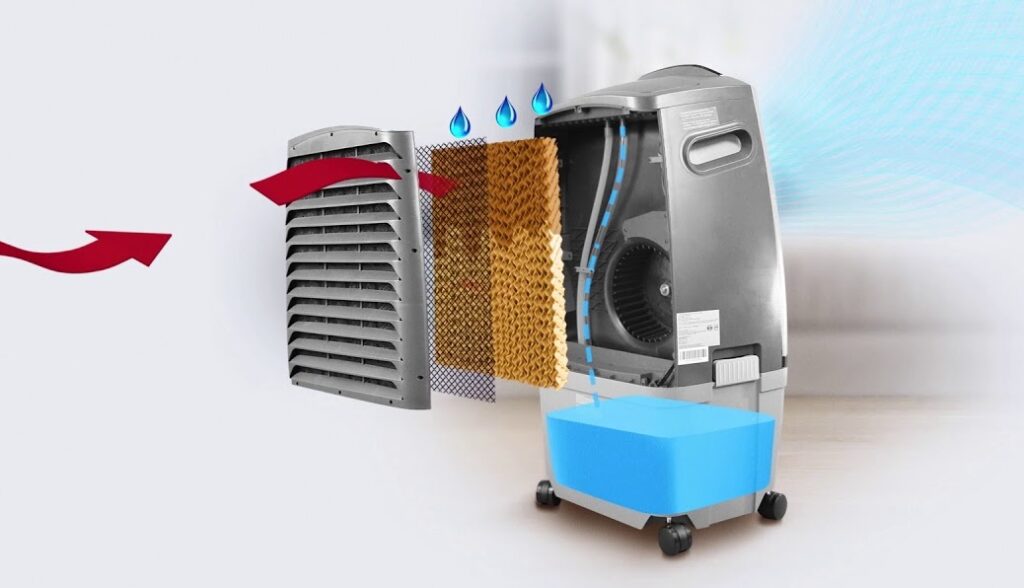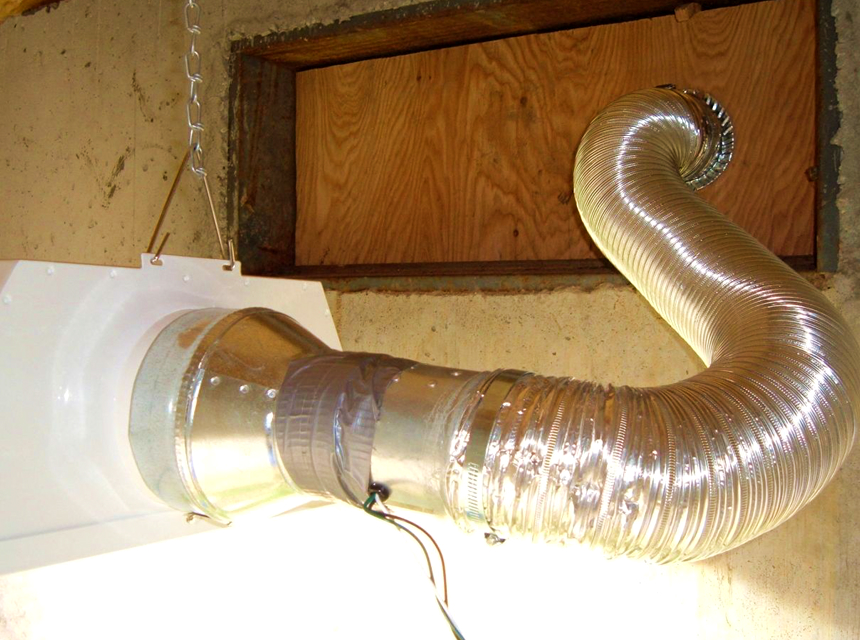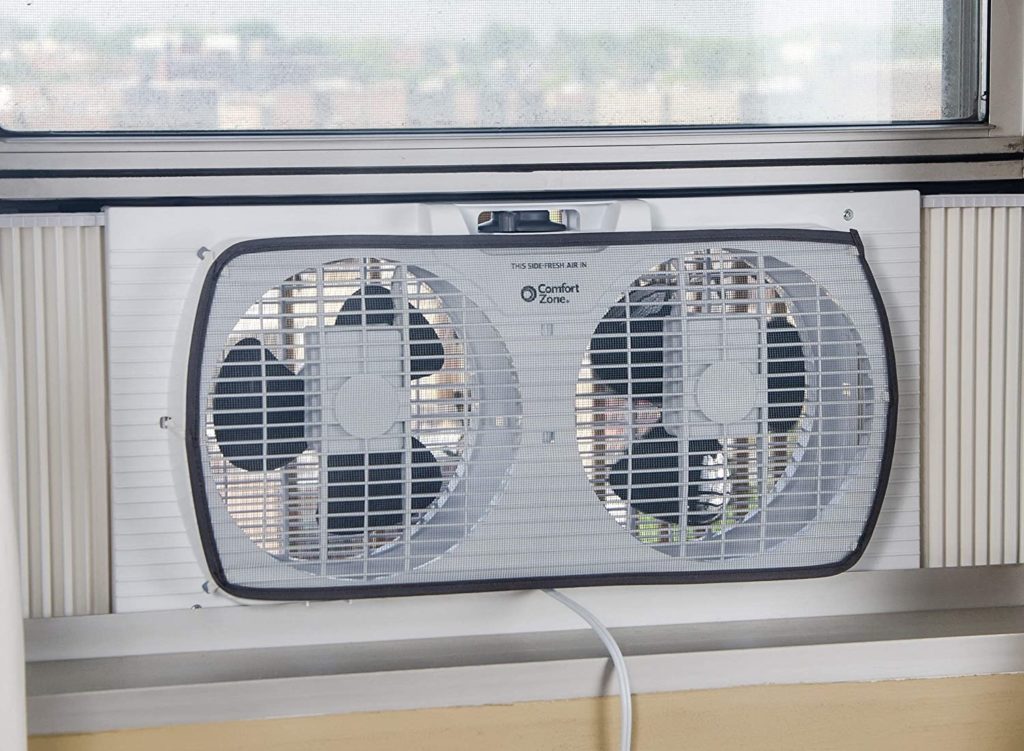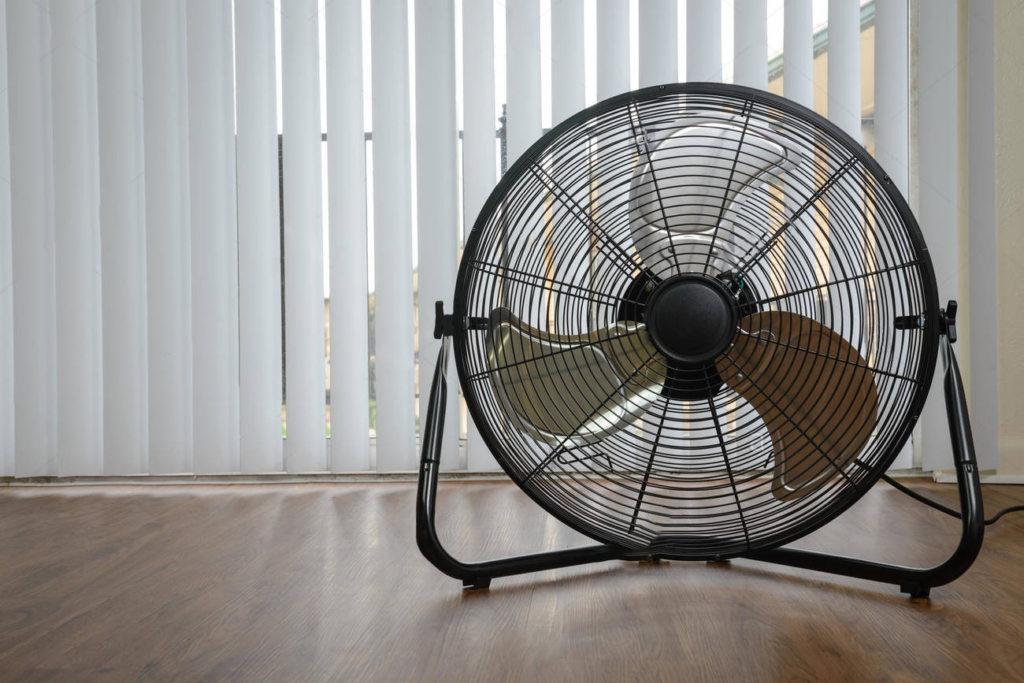

The bathroom is a very humid place. Without adequate ventilation to remove this humidity from the air, your walls and ceiling can develop humidity and mold problems. This can be expensive and tedious to repair. The bathroom exhaust fan is the best solution for this situation. However, for more functionality, it’s great to choose a model with built-in light. This offers you multiple solutions against mold, humidity in poorly-lit bathrooms.
Would you like to have the best bathroom exhaust fan with light? Here, in this article, you’ll find 5 of the best models you can buy. Each model is selected for meeting the standard quality and based on the following features: the fan type, electrical requirements, mounting, CFM, noise level, material, duct connection, light kit, heating, and warranty. First, you’ll find a list of the models in a comparison table. Next, you can find each model’s in-depth reviews and, finally, the buying guide.
Extras: 4 function wall switch
We consider the Broan-Nutone 9093WH as the best bathroom exhaust fan with light for two primary reasons. First, it is both suitable for the bathroom and other rooms up to 100 square feet. Then, it is a 3-in-1 device. It has built-in heating, ventilating and lighting systems. These can be controlled with the use of a single switch. Hence, it serves the functions of moisture, contaminant, and odor removal, while lighting up the spaces.
Safe and efficient, the exhaust fan has a 1500W rated heating element. The ventilation fan is a 70 cubic feet per minute (CFM) capacity system that provides optimal performance. The source of the lighting system is from a 100W bright incandescent light. It provides an even and clear light. However, the light bulb is sold separately. As for the heating system, a centrifugal blower wheel which is electronically balanced, forces the heat to spread evenly around the room.
It is directly supplied with all the necessary accessories. What is more? With a round design, it is quite compact and not heavy. The installation can, therefore, be easily carried out by a single person. The fan has a noise rating of 3.5 sones. According to customer reviews, it makes a lot of noise. This could be a bit annoying in the long run, especially if your bathroom is near your room.
Extras: ETL or UL certified
A flexible type of ceiling-mounted exhaust fan, the Hauslane BF200 is everything the Nutone model couldn’t provide. Ultra-quiet, the electric bathroom fan makes 1007 rotation per minute (RPM) while not keeping the house awake. It has a 6 watt LED light that produces 600 lumens. It also has an air circulation capacity which can ventilate a 120 square feet room. It is a 120-CFM capacity powerful ventilator. It removes odors and smells from the room through its suction power.
Easy to install, the Hauslane model comes with a dual hanger bar for better positioning. It has a housing of standard size which can fit into most ceiling joists. In addition, it has a 4-inch vent connector and components which you can separate. Above all, the fan is certified by the Edison Testing Laboratories (ETL). That is, it meets the North American safety standards on the safety of the equipment. The manufacturer also supplies the model with a 2-year guarantee.
However, unlike the first reviewed model, it doesn’t have heating functionality.
Extras: copper motor, HVI certified
The Akicon bathroom exhaust fan is a model that stands out for its energy efficiency and lower sones. Quiet during operation, the noise level it emits is estimated as 1.5 sones. You’ll barely realize the exhaust fan is running. It has a 4-inch duct diameter and a mounting opening of 9.45 x 9.45 inches. It offers efficient ventilation for bathrooms that measure a maximum of 90 square feet.
Listed by the cUL and certified by the Home Ventilating Institute (HVI), the motor of the equipment is engineered to operate continuously. It is made of original and 100% copper. So, it’s one of the best bathroom exhaust fan with light models that you can leave on 24/7. The model features a 12W LED bulb light, twice the lighting capacity of the Hauslane model. Therefore, it will easily meet your lighting needs without the use of additional, artificial or indirect lighting. Very inexpensive, it is a model for those with low budget.
Extras: Flex-Z Fast installation bracket, Multi-Speed Module, SmartAction Motion Sensor, Condensation Sensor
Quiet and producing clean air, the Panasonic exhaust fan prevents mildew, mold, humidity, and other air pollutants from rooms of installation. And the most interesting thing is that it does all these while emitting just 0.3 sones of noise. It works just like a whisper. Pricey for several reasons, it is a model that can provide a ventilation solution for the entire house. It is suitable for use in the laundry room, bathroom, garage, basement, or even the sunroom.
Asides from its functional sides, the fan has elegantly-designed grille complements that provide aesthetic effects to the room. The grille features a 10-watt LED panel that is dimmable. The model is highly guaranteed to last for long. There’s a 6-year guarantee on the ECM motor. The LED light system has a 5-year guarantee and the parts, 3-year guarantee. Simple to install, the fan works with 4 and 6-inch ducts.
Extras: exquisite design, ETL, HVI listed, flush-mount, nightlight option
With a round, white, and ornamental rim design, the Hunter 83002 is a story of beauty and functionality. With a noise level rating of around 0.3 sones, the exhaust fan is as quiet as a mouse. Being a piece of ventilating equipment with powerful lighting combination, the model uses two A15 60W bulbs. This, however, isn’t included in the package.
Elegantly-built, it sports an excellent bronze finish and a scrollwork housing. It has a cases glass enclosure, inside which are the bulbs which optimally provide nightlight. The fan and light can run simultaneously or independently. This is because the wires of both systems can be run together or separately. The length of this device is 8.9 inches. It measures 8.9 x 9.7 x 7.4 inches. With these dimensions, we can deduce that it is not bulky, and it remains discreet in the performance of its tasks. Meanwhile, it doesn’t have a heating system.
An exhaust fan with light is used to extract stale air from a poorly-lit bathroom. The purpose of its use is to have a healthy and hygienic environment inside this room. To choose this product, we have a couple of tips to offer you regarding its several features, important criteria that determine quality, installation, and usage.
Unlike the classic models, the bathroom exhaust fan with light have their advantages as well as a few downsides.
From the types, mounting options, installation location, the switch or ignition system, CFM capacity, coverage area, lighting and heating, and the noise level, here are some features to consider before choosing.
The exhaust fans are either classified as flexible or rigid according to the ventilation ducts. The flexible ducts, recommended for dimensions of less than 16 cubic feet, can easily be used around obstacles. So, it is advisable to choose flexible insulated conduits. The smooth surface of the rigid ducts facilitates air circulation and is ideal for more spacious dimensions. The shorter the duct, the more easily the air circulates, and the less powerful the fan must be. Choose models with a diameter of at least 4 inches. For longer runs, opt for 6-inch ducts that facilitate the movement of air. Small 3-inch diameter ducts are not recommended.
Many exhaust fans can be wall-mounted or ceiling mounted. However, because you’re searching for models with light, the best mounting option is the ceiling type. This way, the LED light, and produced heat will reach all parts of the bathroom, as it is with Broan-Nutone 9093WH. So, it’s best to only look for models installable on the ceiling.
Because of their dual functionality, the bathroom exhaust fan with light can be energy-consuming. However, they should be as efficient with energy as possible. Generally, an averagely energy-efficient model should require around what a 40W bulb consumes. If your exhaust fan takes 1W of power for every 3-5 CFM, it will draw about 30-50 watts.
When determining the mounting of the fan, take into account that the fan housing must be securely attached to an attic truss. A typical installation is done on the ceiling, and in the middle of the room. Depending on the model, you can also mount it directly above the shower or bathtub. The circuit must be protected by a differential circuit breaker. The fan can also be installed on the wall of a bathroom. However, this installation is less efficient since humidity tends to rise towards the ceiling. If the toilet is in an enclosed space, it is best to install a fan there as well.
The conduits are hidden in the ceiling, and sometimes the attic, to be then directed outside. They must be installed horizontally. It must be installed in a slight downward slope towards the outside. This is to facilitate the flow of water if there is condensation. Make sure to insulate and seal all the elements of the ventilation system so as not to create any heat loss.
In the case of a bathroom renovation project, the plumbing or electrical elements already in place can affect the path of the conduits.
On some items, the device turns on at the same time as you press the light switch. Therefore, it is when you use this room only that it extracts the air. Other models can be started using a cord that must be pulled manually. Some types allow this device to be put into service in a timed manner. You define in advance the duration for which the device must operate whether you are present or not. Some models are provided with hygrostats. This implies that you adjust the hygrometry rate, which is appropriate for you. It is capable of triggering itself when the defined threshold is reached. Moreover, more efficient devices can turn on by presence detection thanks to an infrared component that accompanies them. The fan activates with the same switch as the main light in the bathroom. This avoids having to operate two switches. It ensures that the fan operates as soon as a person turns on the light in the bathroom. In fact, some switches, such as the Broan-Nutone 9093WH fans, have switches that control 4 functions.
The manufacturing materials of your fan are very important. They will determine the resistance that it will have to fulfill its useful life. In this sense, the most common are steel frames and high-quality resistant plastic blades. These will offer you better results, durability, and performance-wise.
It can be very annoying to have to go to the store just to buy the installation materials for your exhaust fan. Ensure that the one you are going to buy includes all the kit and the installation instructions to avoid the inconvenience. There are also some models that neither require drilling nor require great knowledge. Look for these if you have no engineering or electrical experience and do not plan to bring in an expert.
Each bath, shower, and toilet cubicle requires a surplus of 50 CFM. On the other hand, if you have a jetted hot tub, you will need to add to the exhaust fan capacity a surplus of 100 CFM. See more on the CFM criterion in the FAQ section.
Before purchasing a bathroom fan, examine the power required for efficient operation. This is calculated according to a very simple rule.
You must expel 1 ft³ of air per minute for each square feet of area. Increase this figure by 20%, and add 1 ft³/min per linear foot, in the case of rigid pipe. Add 2 ft³/min in the case of a flexible pipe. For example, for a 10 × 10 feet bathroom ventilated by a 6 feet long flexible pipe:
Bathroom fans are generally rated by the noise they generate when they operate at full capacity. The higher the number, the louder the model. The noise level of the exhaust fan is measured in sones. It varies from less than 1 sone to 4 sones, or even less in the case with the Panasonic FV-05-11VKL2 and Hunter 83002, which feature only 0.3 sones. A fan of 2 sones or less is considered silent. If the device is classified as 2 sones, its sound level is twice as loud as 1 sone devices. Thus, an exhaust fan classified 0.5 sone has a noise level similar to that of the noise of rustling leaves. It is, therefore, very silent. If it is 1 sone, its sound level is equivalent to the sound of a moderate conversation or a silent refrigerator. If it is 2 sones, the noise is similar to moderate conversations. And if it is 3 sones, the noise is the same as that of a noisy fan.
Exhaust fans with integrated lighting are very practical when the bathroom is small. To buy the best bathroom exhaust fan with LED light, choose a model that has at least a 12W dimmable LED, as it is with the Akicon model. Some models also offer low voltage night lights, practical in children’s bathrooms.
The primary functions of exhaust fans with light are ventilation and light emission. However, there are also fans with heating systems, such as the Broan-Nutone 9093WH model. These are particularly appreciated after leaving the bath or shower. Models that have heating features also offer great value for money. Although, in most cases, this feature contributes to the price and energy usage.
Exhaust fans with light are relatively expensive. So, you wouldn’t like to blow hundreds of dollars on a product that wouldn’t last beyond a year. You can look for maintenance-free models whose brushes wouldn’t need to be replaced. Models with permanently lubricated motors are also a great option. Because bathroom fans are often exposed to moistures, ensure the construction materials are rust-resistant. Choose models made of galvanized steels. The fans must also have antirust finishes.
The price may determine the overall quality and features. But this isn’t always the case. Some brands are renowned for their unwavering standards when it comes to quality, regardless of the price range. Meanwhile, models with heating systems and additional features like sensors, timer, etc. come at extra costs. They can cost a few hundreds of dollars. However, you can find bathroom exhaust fans under 200 dollars, such as the Hunter 83002 and Akicon models.
Bathroom fans with lighting features are high-end types of exhaust fans. So, it’s important they come with manufacturer warranties. If the durability is a concern for you, go for models with at least a 3-year manufacturer guarantee. The year of warranty offered on a model can vary according to parts such as the motor, LED light, and other parts. For each of these, ensure the policy covers it for at least 3 years.
Installation is a task that can be simple if you have some knowledge. But if you do not have the experience, it is recommended that you seek the help of a professional. Meanwhile, if you want to do it on your own, follow these step-by-step instructions and tips that will allow you to install it easily.
A bathroom exhaust fan is above all a device that must be chosen according to its performance before its aesthetic effects. The most important is to find out about its noise level, switch system, airflow, and ease of installation. The light type and power and energy efficiency level are also important. Here are the models that we consider to be of better quality. The Broan-Nutone 9093WH is the overall best bathroom exhaust fan with light. It offers 70 CFM capacity, which guarantees better ventilation in the bathroom than many models in its class. Although it is not the most silent model, it features a 1500W heating system. The model with the best value is the Hauslane BF200 fan. It is a compact device suitable for use in rooms up to 120 square feet. It is already delivered with the accessories necessary to carry out its installation. However, if you want a good blend of quality and low budget, the Akicon model doesn’t disappoint either. Reasonably priced, it emits just 1.5 sones of noise. It has a 3-year warranty and can ventilate rooms up to 90 square feet.





